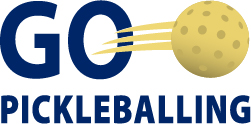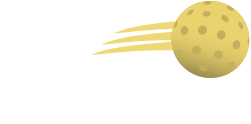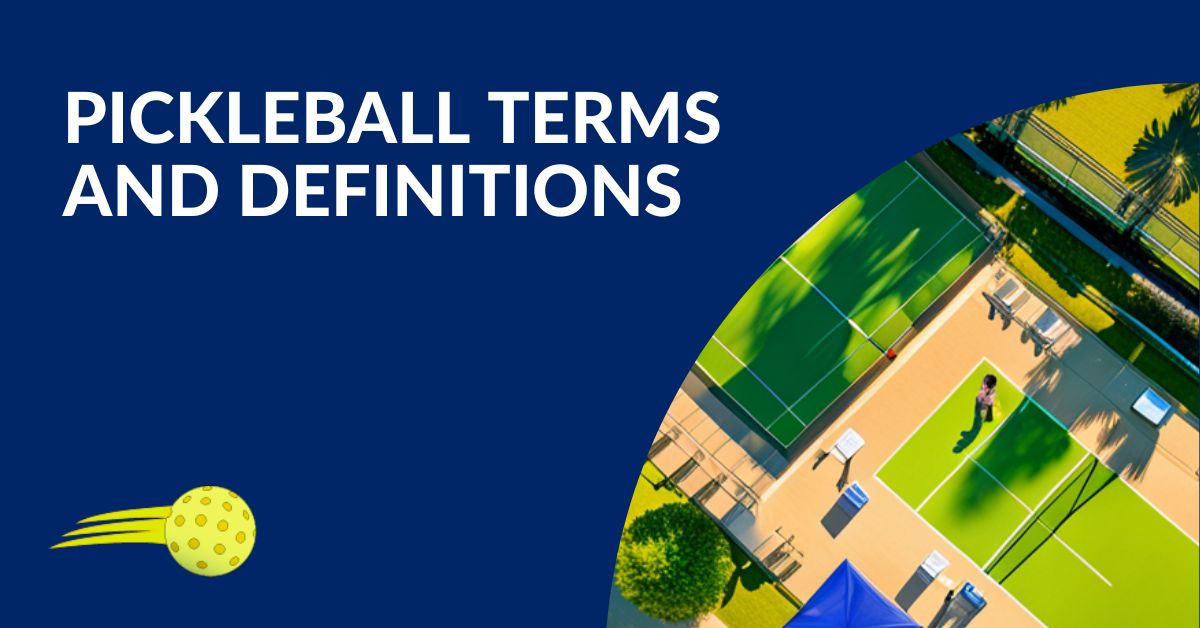Pickleball is a game that combines elements of tennis, badminton, and ping pong, played with a paddle and a plastic ball. As the sport gains popularity, it’s essential to familiarize yourself with the terminology used in pickleball tournaments. In this blog post, we’ll dive into the meaning of various terms commonly encountered in pickleball tournaments and competitions. As you continue to develop your skills and engage in competitive play, familiarizing yourself with these pickleball terms will provide you with a deeper understanding of the game and its rules.
Shop Pickleball GearCarry: It refers to hitting the ball in such a way that it stays on the face of the paddle instead of bouncing away. This technique allows players to control the ball’s trajectory and placement.
Coaching: Coaching involves the communication of information, whether verbal, nonverbal, or electronic, from someone other than a player’s partner. The purpose is to provide guidance and strategies that can help the player or team gain an advantage or avoid violating any rules.
Court: The court refers to the playing area, which is enclosed by the baselines and sidelines. It is where the game takes place and is divided into two halves by the net. Learn more about pickleball court dimensions.
Cross–Court: Cross-court refers to the diagonal opposite side of the court from which the ball was last struck. When players hit the ball diagonally to the other side, it is considered a cross-court shot.
Dead Ball: A dead ball is a ball that is no longer in play. It occurs when a rules violation happens, resulting in the end of the rally or the need to restart the point.
Distraction: Distraction refers to physical actions by a player that are not common to the game and may interfere with the opponent’s ability or concentration to hit the ball. Examples include making loud noises, stomping feet, or waving the paddle in a distracting manner.
Dink Shot: A soft shot that is intended to arc over the pickleball net and land within the non-volley zone.
Double Bounce: Double bounce happens when the ball bounces twice on one side before it is returned. In pickleball, the ball must be allowed to bounce once on each side before players can hit it out of the air.
Double Hit: A double hit occurs when a player hits the ball twice before it is returned. This is considered a fault and results in the opponent winning the point.
Ejection: Ejection is a behavior violation that is so flagrant that it leads to the player being removed from the tournament by the Tournament Director. Although the player may remain at the venue, they are no longer allowed to participate in any matches.
Expulsion: Expulsion is a severe behavior violation that results in the player being prohibited from playing in any current and future brackets of the tournament. The player must immediately leave the venue and cannot return for the remainder of the tournament.
Fault: A fault is a rules violation that leads to a dead ball and the end of the rally. It can occur due to various reasons, such as stepping into the non-volley zone during a volley or hitting the ball out of bounds.
First Server: In doubles, the first server is the player who serves from the right/even service court after a side out, depending on the team’s score. The first server rotates among the team members throughout the game.
Forfeit: A forfeit occurs when a player or team commits an egregious behavior violation or receives a combination of technical warnings and/or technical fouls, resulting in the opponent being awarded the game or match without further play.
Groundstroke: A groundstroke refers to striking the ball after it has bounced. It is a common shot used in pickleball, where players let the ball bounce before hitting it back to the opponent.
Hinder: A hinder is any transient element or occurrence not caused by a player that adversely impacts play. This includes situations like a ball from another court rolling onto the playing surface or a flying insect distracting a player during the game.
Imaginary Extension: Imaginary extension refers to projecting where a line would extend beyond its current end point if it were not limited to the boundaries of the playing area. Players and referees use this concept to determine if a shot is in or out of bounds.
Left/Odd Court: The left/odd court is the service area on the left side of the court when facing the net. In doubles or singles, the starting server should be positioned on the left/odd side of the court when their score is odd.
Let: A serve that hits the net cord and lands in the service court. Let may also refer to a rally that must be replayed for any reason.
Line Call: A line call is a loud word or words spoken by a player or line judge to indicate that a live ball has not landed in the required court space. The preferred word to indicate a line call is “OUT,” but other phrases like “wide,” “long,” “no,” or “deep” are also acceptable.
Live Ball/In Play: The live ball refers to the point in time when the referee or server starts to call the score and the rally is in progress.
Lob: A shot that returns the ball as high and deep as possible, forcing the opposing side back to the baseline.
Momentum: Momentum is a property of a body in motion, such as a player executing a volley, that causes them to continue in motion after contacting the ball. Players must regain balance and control of their motion or stop moving toward the non-volley zone to avoid committing a fault.
Non-Volley Zone (NVZ): The non-volley zone is a 7-foot-by-20-foot area adjacent to the net and specific to each team’s end of the court. It is defined by the lines bounding the NVZ and does not rise above the playing surface. Players are not allowed to volley the ball (hit it out of the air) while standing inside the non-volley zone. Learn more about the Non-Volley Zone Rules.
Overhead Slam / Smash: A hard, overhand shot usually resulting from an opponent’s lob, high return, or high bounce.
Paddle Grip Adjustments: Paddle grip adjustments refer to non-mechanical devices or methods that players use to change the size of the grip or stabilize their hand on the paddle. These devices can provide players with a more comfortable and secure grip during gameplay.
Paddle Head: The paddle head refers to the main body of the pickleball paddle, excluding the handle. It is the part of the paddle that players use to strike the ball.
Permanent Object: Permanent objects are any objects on or near the court that can interfere with play. This includes the ceiling, walls, fencing, lighting fixtures, net posts, net post legs, spectator stands and seats, referees, line judges, and other objects around and above the court.
Plane of the Net: The plane of the net refers to the imaginary vertical planes on all sides that extend beyond the net system. It helps determine whether a ball passes over or under the net during gameplay.
Playing Surface: The playing surface refers to the court itself and the area surrounding it that is designated for playing. It encompasses the dimensions of the court, including the baselines, sidelines, and the space between the lines.
Profanity: Profanity refers to words, phrases, or hand gestures that are considered inappropriate in polite company or around children. This includes offensive language or verbal expressions that are generally considered disrespectful or offensive.
Rally: A rally is a continuous play that occurs after the service and before a fault. It involves both teams hitting the ball back and forth, attempting to keep the ball in play and score points.
Receiver: The receiver is the player positioned diagonally opposite the server. Their role is to return the serve and initiate the rally.
Replay: A replay is a rally that is restarted for any reason without awarding a point or changing the server. It usually occurs when a hindrance or other circumstance requires the rally to be redone.
Retirement: Retirement refers to a player or team’s voluntary decision to stop the match, conceding the win to their opponent.
Right/Even Court: The right/even court is the service area on the right side of the court when facing the net. In doubles or singles, the starting server should be positioned on the right/even side of the court when their score is even.
Second Serve: In doubles, a second serve refers to the condition when a serving team loses their first allocated serve and must serve again.
Second Server: The second server in doubles is the serving team’s partner who serves after the first server loses their serve. The second server takes over the serving responsibility.
Serve: The serve is the initial strike of the ball with the paddle to start the rally. It is executed from the service court and must be hit under specific serving rules.
Server: The server is the player who initiates a rally by executing the serve. Depending on the team’s score, the player serving may vary.
Service Court: The service court refers to the area on either side of the centerline, including the centerline, sideline, and baseline, excluding the non-volley zone. It is the designated area from which the serve must be executed.
Serving Area: The serving area is the space behind the baseline and on and between the imaginary extensions of the court centerline and each sideline. It is the area from which the server must serve the ball.
Side Out: A side out occurs when a singles player or doubles team loses their serve, and the opposing team is awarded the serve. It typically happens after a fault or when the serving team fails to win a point.
Starting Server: The starting server is the player designated to serve first at the beginning of the game in doubles. In doubles tournament play, the starting server is required to wear a visible form of identification determined by the Tournament Director.
Technical Foul: A technical foul is a referee’s assessment of a behavioral violation that results in the removal of one point from the offending team’s score, unless their score is already zero, in which case a point is added to the opposing side’s score. A technical foul is given after one technical warning or when the referee deems it necessary based on the player’s or team’s actions.
Technical Warning: A technical warning is a referee’s warning given to a player or team for a behavioral violation. It serves as a cautionary measure and does not result in points being awarded or deducted.
Verbal Warning: A verbal warning is a referee’s warning given to a player or team for a behavioral violation. Each team can receive only one verbal warning per match.
Volley: A volley is a strike of the ball during a rally before it has bounced. It involves hitting the ball out of the air, typically as an offensive shot.
Wheelchair Player: A wheelchair player refers to any person, with or without a disability, who plays pickleball in a wheelchair. The wheelchair is considered part of the player’s body, and they can compete alongside other players in a wheelchair or against players without disabilities.
Withdrawal: A withdrawal occurs when a player or team requests to be removed from any upcoming play in a specified bracket. It involves voluntarily withdrawing from the tournament or a particular bracket of the tournament.
We hope this comprehensive overview of pickleball terms and definitions has been insightful and will contribute to your success on the court. Let us know if we missed anything in the comments below. Stay tuned for more informative content on pickleball strategies, techniques, and equipment recommendations.



